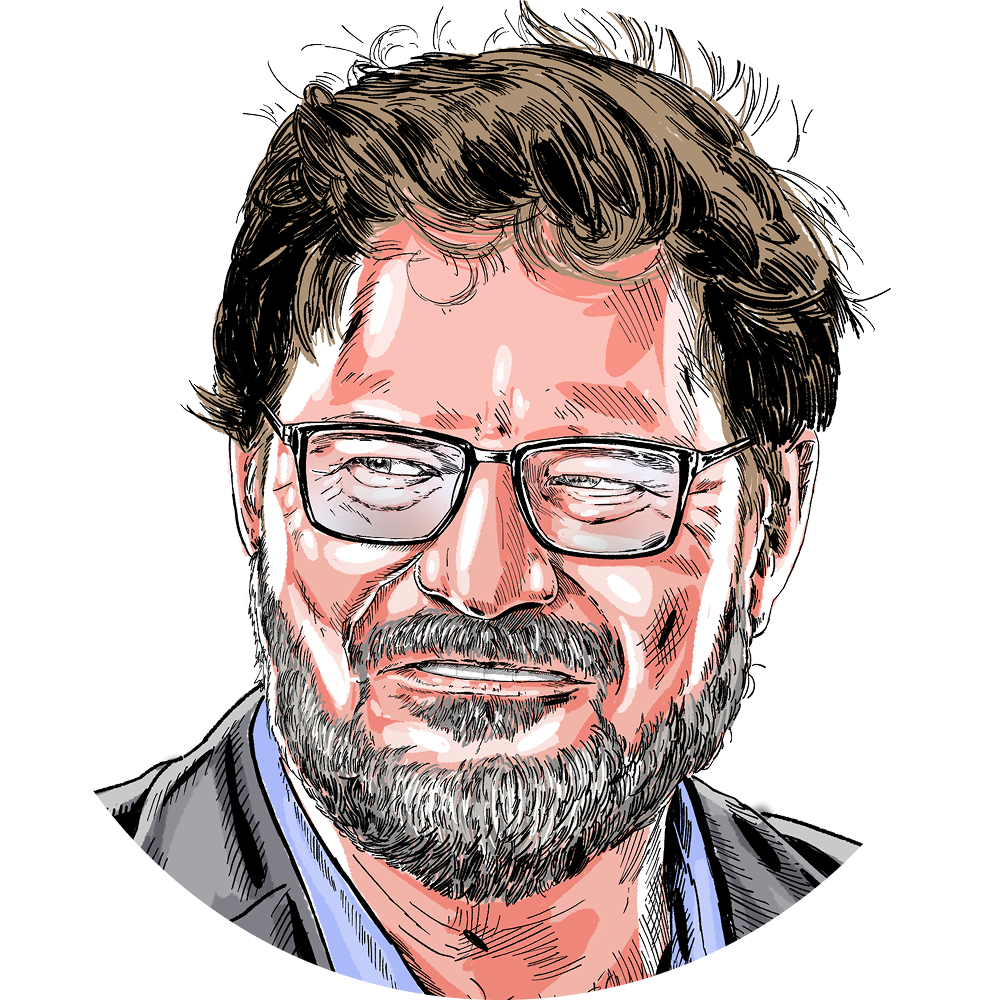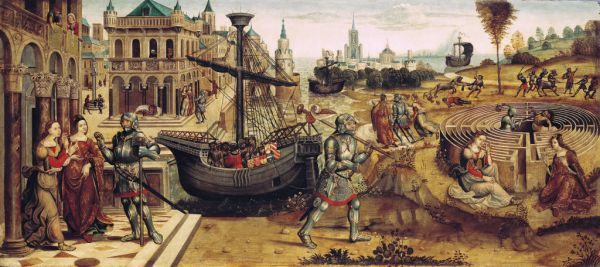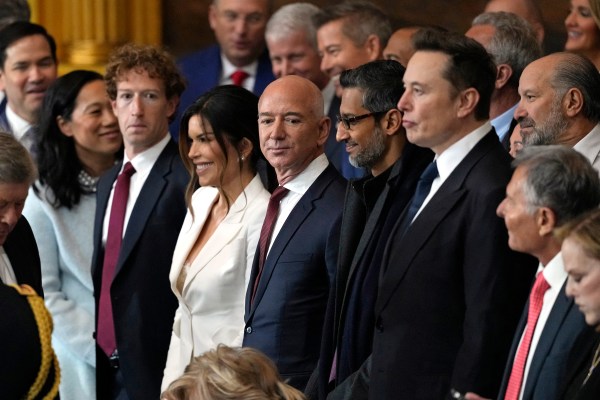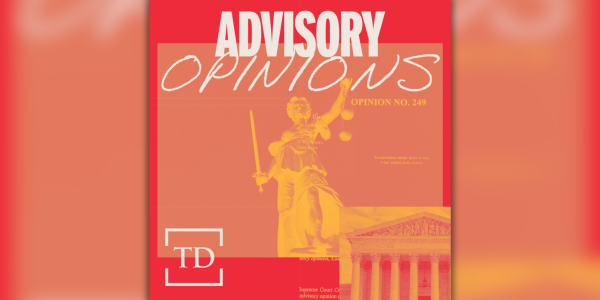I spent years reading about fascism. The result was a book, Liberal Fascism, admired by some, reviled by more, and caricatured by many more.
There is no political concept in modern history more confused than fascism. Note I didn’t say confusing. Lots of people are wholly unconfused by fascism; they just can’t define it very well. But they’re sure they know it when they see it.
Definitions and explanations are littered across thousands of books and articles. There are so many definitions—never mind theories—of fascism strewn across the intellectual landscape that it calls to mind one of my favorite quotes from Raymond Moley, FDR’s right-hand man for much of the New Deal. “To look upon these programs as the result of a unified plan,” he wrote, “was to believe that the accumulation of stuffed snakes, base-ball pictures, school flags, old tennis shoes, carpenter’s tools, geometry books, and chemistry sets in a boy’s bedroom could have been put there by an interior decorator.”
But that doesn’t even capture it. A better image might be that of a landfill, where the discarded detritus of countless lives and businesses end up in the same place. All you can say about the huge pile of random objects—from soiled diapers to outdated computers—is that they all exist as the product of human action during a specific time. Some of the items have more utility than others, but there is no unifying theme to the mass other than the ones people choose to impose upon it. In Liberal Fascism, after listing a tiny fraction of the various definitions, I wrote:
It’s an academic version of Heisenberg’s uncertainty principle: The more closely you study the subject, the less clearly defined it becomes. The historian R. A. H. Robinson wrote 20 years ago, “Although enormous amounts of research time and mental energy have been put into the study of it … fascism has remained the great conundrum for students of the twentieth century.” Meanwhile, the authors of the Dictionnaire historique des fascismes et du nazisme flatly assert, “No universally accepted definition of the fascist phenomenon exists, no consensus, however slight, as to its range, its ideological origins, or the modalities of action which characterize it.” Stanley G. Payne, considered by many to be the leading living scholar of fascism, wrote in 1995, “At the end of the twentieth century fascism remains probably the vaguest of the major political terms.” There are even serious scholars who argue that Nazism wasn’t fascist, that fascism doesn’t exist at all, or that it is primarily a secular religion (this is my own view). “Put simply,” writes Gilbert Allardyce, “we have agreed to use the word without agreeing on how to define it.”
In 1979, Allardyce published “What Fascism Is Not: Thoughts on the Deflation of a Concept” in the American Historical Review. It had an enormous, intellectually liberating impact on me. Allardyce methodically ran through the major theories of fascism, though he largely ignored Marxist interpretations, in large part because the Marxist interpretations are garbage and not worth spending a lot of time on. The Marxists were simply too invested in attacking their real enemy—capitalism—to be taken all that seriously.
Instead, Allardyce focused on the three most prominent and serious modes of interpretation: fascism as a generic concept, fascism as an ideology, and fascism as a personality type. He persuaded me that all three approaches have fatal flaws. I can’t do it all justice, but I’ll give you a sense of it.
Generic fascism holds that there is this thing, fascism, that manifests itself in different countries but wherever it springs up there is a significant and distinct consistency to it. It’s the same thing, arising in different places. This is hard to reconcile with the emergence of fascism in very different places with very different cultures, economies, and intellectual currents. For instance, many theories of generic fascism see it as a revolt against “modernization.” But German Nazism emerged in the most modern and industrialized country in the world. Italian fascism—where the term fascism was born—was relatively backward and undeveloped. And the Italian Fascists loved modernization. That was in many respects the core of Mussolini’s vision and appeal, making the trains run on time and all that.
As a matter of basic history, it’s simply a fact that fascists or “fascists” in different allegedly fascist movements often disagreed that they were part of the same movement. Indeed, many supposed fascists sincerely rejected the label. For most of Italian fascism’s existence (basically until 1936), the Italians loathed and denounced German Nazism as an utterly pagan, racist, and antisemitic abomination. And those are just the two most famous movements that “everybody knows” are fascist. Supposedly fascist movements in Hungary, Romania, China, Spain, Britain, Belgium, and the United States are extremely hard to reconcile with each other, never mind to form out of them some comprehensive definition of fascism. As a result, many scholars of fascism would remove Nazism or even Italian fascism from their definitions of generic fascism.
Ideological fascism has similar problems. When fascist leaders met in Montreux for the first (and only) meeting of the Fascist International to hammer out a unifying theory of what fascism is—the famously fascist Spanish falangists didn’t attend because they insisted they weren’t fascists—the meeting foundered on the “Jewish Question.” The final document was so broad and generic that all manner of explicitly non-fascist groups, from traditionalists to Catholic corporatists could be labeled fascist (no doubt to the delight of leftists who love to label anybody to their right as fascist).
The quest for ideological fascism scours the intellectual history of “pre-fascist” Europe for precursor ideas that culminated in fascism. This ultimately amounts to cherry-picking from discordant thinkers across intellectual and ideological traditions. German Nazism was obviously reliant upon “volkish” antisemitic and nationalistic traditions, but outside Germany and Austria, those traditions did not exist. (Biological racism was a hard lodestar for Italian fascism, given that the Italian peninsula was arguably the world’s greatest genetic melting pot before America came along.) Now, I do think there are ideological commonalities worth studying, but only if we accept that there are numerous exceptions, and only if we accept that there wasn’t a single thing called fascism but a diverse array of what we might call fascisms.
Finally, there is the idea of a fascist personality type. Some theories of fascist personality are complete nonsense. Theodor Adorno and his Frankfurt School colleagues, who tried to marry Marx to Freud, are the primary peddlers of this bunk. Adorno’s “F-scale” was an exercise in grotesque intellectual dishonesty, in which he tried to declare that the more you disagreed with communism the more fascist you were. Basically, in his view, if you favored authoritarians you were fascist—unless you liked Stalin. That made you the opposite of a fascist.
This is not to say that certain personalities aren’t attracted to fascism. The point is many of those personality types are also attracted to communism, or a dozen other authoritarian “isms.” That’s because some people are thirsty for power, control, revolution, glory, etc. You don’t need a theory of fascism to understand that. Just because Fidel Castro, Joseph Stalin, or Hugo Chavez name-checked Marx or Lenin doesn’t make them any less of an evil, anti-liberal, personality type.
I am not saying that these theories of fascism don’t have value. There’s a lot of explanatory power in them. Many definitions amount to the old saw about how you sculpt an elephant: Take a block of marble and remove everything that isn’t an elephant. Ernst Nolte’s “fascist minimum” is a checklist of things that fascism is against. It’s against Marxism, against bourgeois values, against modernity, etc. But it remains the case that, even for the foremost scholars of fascism, defining it is, in the words of Ian Kershaw, “like trying to nail jelly to the wall.”
And that’s what I found so liberating about Allardyce’s essay. If there’s no widely agreed-upon definition of fascism, why should I bother trying to come up with one that satisfies everybody? Besides, my goal was less to come up with an irrefutable definition of fascism than to refute the left’s understanding of fascism—and by extension of traditional American conservatism, which the left routinely described as crypto-or-outright fascist. In Liberal Fascism, I hold that American conservatism is defined essentially by two pillars. The first is classical liberalism: limited government, laissez-faire economics, the rule of law, pluralism, property rights, etc. The second is traditional morality, variously defined: cultural conservatism, religious commitment, the importance of custom, etc. There’s a lot of room within and between both of these categories for disagreement. But in the Anglo-American tradition, at least until the moment we’re in right now, the more committed you are to free market economics and limited government the more you are considered “right wing” or “conservative.” The same goes for people who are culturally or religiously conservative. And, suffice it to say, Italian fascism and German Nazism weren’t either of those things.
But my aim here isn’t to talk about my book. Rather it’s to explain, if not necessarily, define fascism. One way to do that is to stop talking about what fascism is and instead look at what fascists want. The historian John Lukacs and others argued that Italian fascism and German Nazism were ultimately radical forms of populism. I am very sympathetic to this because populism is one of those concepts that has very little ideological content. There are left-wing populists and right-wing populists. In the 17th and 18th centuries, populism was considered “left-wing” or “radical” because “the people” were revolting against the established order of the church and throne. Populists could be small-d democrats or small-r republicans (and for a long time the two terms were largely interchangeable). They could be advocates of constitutional monarchy. They could also be far more radical, wanting to start the world—or at least France—over from scratch. There was no generic “populist” ideology or personality type to speak of. There was, I suppose, generic populism, but what made it generic was its orientation against the status quo.
Think of it this way. “Protest” has no inherent content. What specific protesters are for is determined by what they are protesting against. But sometimes, protest becomes radicalism. As Samuel Huntington has noted, radicalism and conservatism have no inherent political content either. “No political philosopher has ever described a conservative utopia,” Huntington wrote, because conservatives in one place want to conserve or preserve different things than those in another place. A conservative Bolshevik in Soviet Russia wanted to conserve the opposite of what a conservative American wanted to conserve. Radicals, meanwhile, just want to tear down the existing order. What follows after victory is up for debate. The Shah of Iran was taken down by Islamists and Marxists, and the Islamists won the argument after he was gone. I think this gets at a big chunk of what fascism in the real world is: radical populist protest.
The second important factor is nationalism. Contrary to many detractors, not all nationalists are fascists. But I think it’s fair to say that all fascists are nationalists. For all the differences—real and imagined—between communism and fascism, this is the most important. But these differences are far, far more academic than real. The Soviet Union began as the self-described tip of the spear of the global revolution. But once in power, it quickly became nationalist, admittedly with an imperial dimension. All of those Marxist movements for national liberation talked a big deal about global revolution and international class consciousness. But once in power, the differences between communist and “nationalist” dictators became rhetorical. If you disagree, all I ask is that you give me a definition of fascism that doesn’t include the reign of Fidel Castro or Hugo Chávez.
This gets to my, by now tedious for some, distinction between patriotism and nationalism.
There’s an inherent small-c conservatism to patriotism. Patriotism extols the best version of the nation and the regime as it exists. The patriot in the American context puts the Constitution above the political passions of the moment. This is true regardless of political ideology. There are plenty of left-wing people who are patriotic in this sense because, regardless of whatever policies they may prefer, they want to achieve those policies according to the rules.
The nationalist, on the other hand, is all about the political passions of the moment. That doesn’t mean the nationalists are always wrong. But they are always wrong when they elevate those passions above the Constitution and America’s highest ideals. As G.K. Chesterton said, “‘My country, right or wrong,’ is a thing that no patriot would think of saying. It is like saying, ‘My mother, drunk or sober.’” Hyper-nationalism, which is always and everywhere hyper-populism when it’s an actual movement of any significance, is a form of drunkenness. Hitler once said that he was a nationalist but not a patriot. He wanted to “liberate” the German nation, he did not want to preserve the German regime.
One reason that nationalism can become fascism is that nationalism contains within it no limiting principle. Patriotism, again by my definition, is all about limiting principles. Adherence to those principles is what makes you a patriot. For the hyper-nationalist, all that matters is the realization of the people’s will. Never mind that “the people” are always defined as those who agree with the movement. Everyone else is an “enemy within.”
I should caveat that. There is one limiting principle: the leader. In hyper-nationalism and fascism, words on parchment mean nothing. The leader means everything because he—and it’s almost always a he—becomes an avatar of the peoples, the nation. The leader’s will is the only limiting principle. What he wants is what we want. If he changes his mind, so be it. Who are we to second guess?
Hyper-nationalism depends on enemies. The pearl of the nation cannot be formed without the irritating sand of an enemy within the shell of the nation. Charles de Gaulle famously said, “Patriotism is when love of your own people comes first; nationalism, when hate for people other than your own comes first.” I don’t entirely subscribe to that, but my objections to it can be satisfied by conceding that love for your own people necessarily means adherence to an ideal, a set of principles, that lay out what is best for your people beyond a moment of popular rage.
There’s enormous controversy about what constitutes things like fascist economics, fascist foreign policy, fascist metaphysics, etc. I love those controversies and have strong opinions about them. But, I think such things are given too much importance by people who really want to argue about other things. The Marxists often try to make fascism about economics because they think economics explain everything. The people who want to make fascism all about bigotry are more interested in fighting bigotry. Nothing wrong with that. And I’m the last person who’d want to say that the Holocaust is some kind of afterthought.
But ultimately, whatever definition you subscribe to, fascism is about power and mobilizing popular passion to support it. Bigotry is a great way to do that. So are complaints about capitalist, or globalist, or Marxist, “ruling classes,” “financiers,” and “plutocrats” keeping you down. But the fascist employs those arguments because they are useful to attaining power. It’s not that Hitler didn’t sincerely hate Jews—of course he did. But Mussolini didn’t. What the two men shared wasn’t ideology or similar personalities, but rather a lust for power and personal glory.
And, as I discuss elsewhere, the pursuit and amplification of power was self-justifying. If telling the truth helped arouse popular passion on your behalf, tell the truth. If lying works better, lie. Concern for truth is for scribblers, intellectuals, “Ink Knights” as Hitler called them. The true leader of men has no time for such bourgeois decadence. The only truth that matters is the truth you bend others into believing.
In Liberal Fascism I subscribed to Eric Voegelin’s (onetime) understanding of fascism as a political religion. I still do to a certain extent, but I think that’s subordinate to my point about power. The Nazis and Italian fascists sold their movements as a kind of political religion. In its 1931 encyclical Non abbiamo bisogno, the Vatican accused the fascists of “Statolatry” and denounced their effort “to monopolize completely the young, from their tenderest years up to manhood and womanhood, for the exclusive advantage of a party and of a regime based on an ideology which clearly resolves itself into a true, a real pagan worship of the State.”
I still broadly subscribe to that view, but I think the statolatry is downstream of the broader point about power. Turning politics into a religion is a great way of securing power. At a time when “modernization” was uprooting established customs and institutions, providing a new source of meaning to replace the old ones was seductive and effective. But, like the ideological definitions of fascism, I don’t think the political religion interpretation is central to understanding what fascism is, even if it is central to understanding what fascism can become if allowed to go unchecked. Power worship needs altars and icons to really take hold.
I don’t know if any of this helps to understand fascism. But understanding fascism, alas, is a journey, not a destination.










Please note that we at The Dispatch hold ourselves, our work, and our commenters to a higher standard than other places on the internet. We welcome comments that foster genuine debate or discussion—including comments critical of us or our work—but responses that include ad hominem attacks on fellow Dispatch members or are intended to stoke fear and anger may be moderated.
With your membership, you only have the ability to comment on The Morning Dispatch articles. Consider upgrading to join the conversation everywhere.